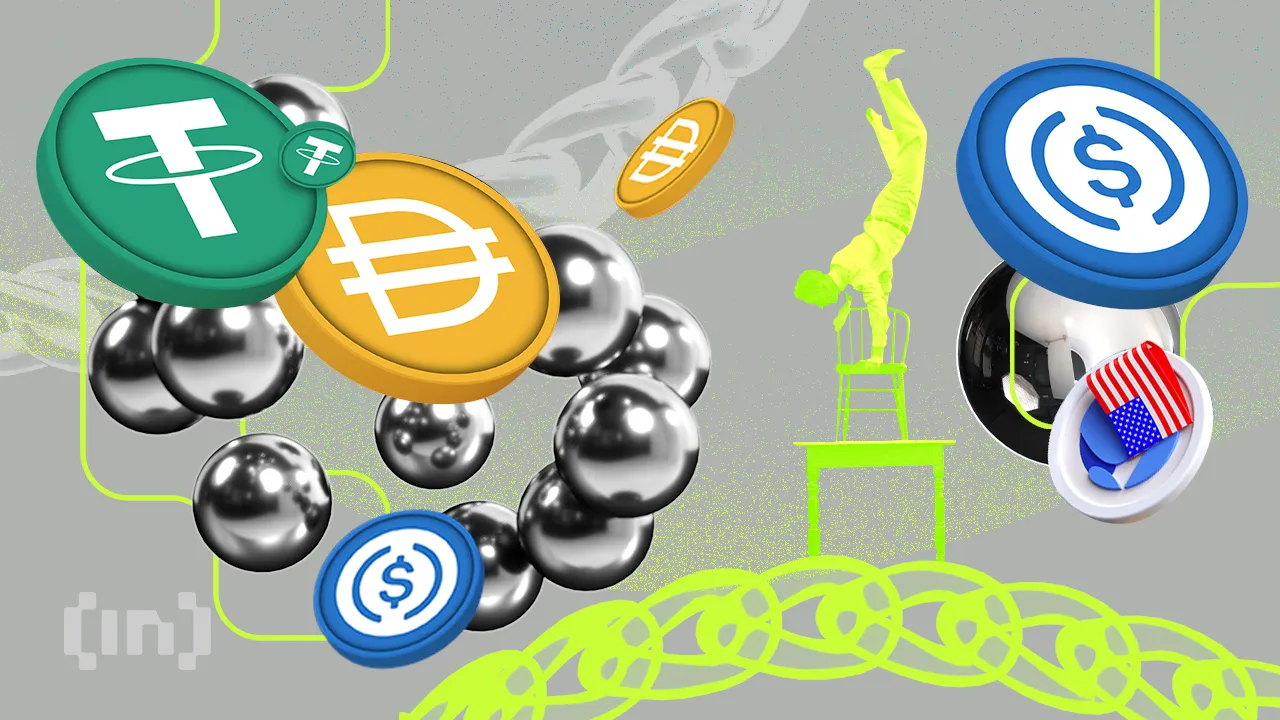sUSD Depeg Rekindles Terra Flashbacks—Can Algorithmic Stablecoins Ever Win Trust?
0
0

The recent depeg incident involving sUSD from Synthetix has highlighted that this sector remains fraught with risks despite the immense potential of algorithmic stablecoins.
The sUSD incident is not the first to expose the vulnerabilities of algorithmic stablecoins. From technical challenges and regulatory pressures to dwindling community trust, projects in this space must navigate numerous obstacles to survive and thrive.
The Landscape of the Algorithmic Stablecoin Market
Algorithmic stablecoins, which maintain their value without direct asset backing, were once hailed as a breakthrough in decentralized finance (DeFi). However, according to CoinMarketCap data from April 2025, the total stablecoin market capitalization stands at $234 billion, while algorithmic stablecoins account for about $458 million, equivalent to just 0.2%.
 Algorithmic Stablecoin Market Capitalization. Source: CoinMarketCap
Algorithmic Stablecoin Market Capitalization. Source: CoinMarketCap
This stark disparity reflects the reality that algorithmic stablecoins have yet to gain widespread trust from the community. High-profile failures like the collapse of UST/LUNA in 2022, coupled with regulatory uncertainties such as the EU’s MiCA framework, have fueled skepticism.
More recently, the depeg of Synthetix’s sUSD is a typical example of this model’s inherent risks.
A Deep Dive into Synthetix’s sUSD Depeg
Synthetix is a well-known DeFi protocol celebrated for its synthetic asset system. Within this ecosystem, sUSD is an algorithmic stablecoin designed to peg its value at 1 USD, backed by the SNX token and price data from Chainlink.
 sUSD Price. Source: BeInCrypto
sUSD Price. Source: BeInCrypto
However, sUSD has faced significant challenges with a prolonged depeg recently. At the time of BeInCrypto’s report, sUSD was trading at 0.77 USD, which has persisted since late March 2025. The primary cause was a major liquidity provider withdrawing from the sBTC/wBTC pool on Curve, which triggered intense selling pressure on sUSD. This forced users to convert other synthetic assets like sETH or sBTC into sUSD, exacerbating the price decline.
On April 21, 2025, Kain Warwick, the founder of Synthetix, announced on X that the team had implemented an sUSD staking mechanism to address the issue. However, he noted that the mechanism remains manual and lacks a fully functional user interface (UI), which is expected to launch in a few days.
“Update on the sUSD depeg. We have implemented an sUSD staking mechanism but it’s very manual until the UI goes live in a few days. Here was my hot take from discord though,” shared Kain Warwick, founder of Synthetix.
Warwick further stated that if the incentive mechanism (carrot) proves ineffective, Synthetix would adopt stricter measures (stick) to compel stakers in the 420 pool to participate more actively. He emphasized that, with the collective net worth of SNX stakers reaching billions of USD, Synthetix has the financial resources to stabilize sUSD and resume development of derivative products on Layer 1.
No Successfully Algorithmic Stablecoin Project
Before the sUSD depeg incident, the market witnessed the dramatic collapse of UST/LUNA in 2022. UST, Terra’s algorithmic stablecoin, suffered a severe depeg, dragging LUNA’s value down from $120 to near zero. This event caused billions of USD in losses and significantly eroded trust in the algorithmic stablecoin model.
More recently, the ‘Godfather of DeFi’, Andre Cronje, behind Sonic (formerly Fantom), also shifted direction. Sonic initially developed a USD-based algorithmic stablecoin but later pivoted to a stablecoin pegged to the UAE dirham.
“Pretty sure our team cracked algo stable coins today, but previous cycle gave me so much PTSD not sure if we should implement,” Cronje stated.
Beyond technical risks, algorithmic stablecoins face mounting regulatory pressures. The EU’s MiCA regulation, effective since June 2024, imposes strict standards on stablecoin issuers to ensure consumer protection and financial stability. Under MiCA, algorithmic stablecoins are classified as ART (Asset-Referenced Token) or EMT (E-Money Token), requiring projects to meet complex compliance demands.
This intensifies the pressure on developers, especially as other jurisdictions also tighten crypto regulations.
These examples show the vulnerability of algorithmic stablecoins to liquidity shocks and market sentiment, particularly due to their lack of direct asset backing.
The Potential of Algorithmic Stablecoins
Despite the challenges, algorithmic stablecoins still hold developmental potential. A March 2025 post on X by CampbellJAustin suggested that a next-generation decentralized algorithmic stablecoin is feasible if lessons are learned from past failures.
“I actually think a next-gen decentralized algorithmic stablecoin is possible. I also think it will not be done correctly by the crypto community because the primary constraints are economic and risk management, not technological,” CampbellJAustin shared.
However, projects must focus on building more price stability mechanisms, combining algorithms with liquidity safeguards to succeed. Additionally, they should prepare for regulatory requirements, particularly in regions with stringent rules like the EU. Transparency in operations, regular audits, and clear communication with users are crucial to rebuilding community trust.
By addressing these factors, projects in this space can seize the opportunity to regain confidence and drive innovation.
0
0
 Manage all your crypto, NFT and DeFi from one place
Manage all your crypto, NFT and DeFi from one placeSecurely connect the portfolio you’re using to start.







